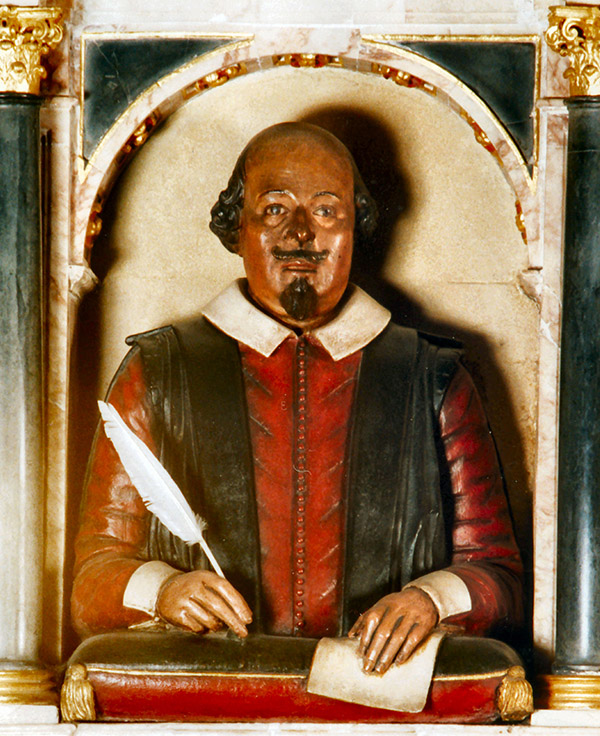
Bust of Shakespeare Stratford-upon-Avon
The Shakespeare Enigma
Who wrote the works of Shakespeare? Indeed, who did?
I was thrown unsuspectingly into this hotbed of debate in the early 1970's, and if you want a comfortable life it is a singularly uncomfortable place to be. Dogma abounds, both in academic and scientific institutions. They are ruled by dominant people, or groups of people, with dogmatic views and vested interests, and it is dangerous to question such 'authority'. There are many taboos. To break such a taboo is to bring the vehement and dismissive fire of authority down upon one's head, and many brave searchers after truth have suffered badly and unfairly from such attack. To question the orthodox viewpoint concerning the authorship of the Shakespeare works is a particularly powerful example of this. Yet the whole subject is entirely questionable and worthy of questioning.
The case for the actor of Stratford-upon-Avon being the author of the poetic and dramatic works published under the name of William Shakespeare is based entirely on evidence that was supplied only after the actor's death and which is enigmatic to say the least. Despite all the painstaking research that has been done, absolutely nothing has been found in the actor Will Shaksper's life to indicate him as the author, or indeed as having written anything at all. This in itself is extraordinary and invites many questions. Moreover, people in Shakespeare's day were already questioning the authorship and suggesting who the author might really have been.

Folio portrait of Shakespeare
When one looks carefully at the evidence that is supposed to indicate Will Shaksper as the author Shakespeare, then the questions come thick and fast. The evidence is contained in the 1623 Shakespeare First Folio and the Shakespeare Monument erected in Holy Trinity Church, Stratford-upon-Avon. But the evidence is blatantly enigmatic, even to the extent of the Monument suggesting that there were two Shakespeares, the actor and the author.
The Folio alerts us strongly in its opening pages to an enigma, a secret. The engraved portrait on the title page carefully depicts Shakespeare with a doublet that has two left shoulders, one seen from the front and one from the back. This is not accidental. Left-handedness was used to signify something that was cryptic, concealed. Ben Jonson's equally cryptic poem prefacing the portrait suggests the same—all is not what it seems.
These are three clues, left deliberately for us to discover. There is something hidden that the authors of this mystery want us to find, but not to discover it too easily or quickly. By following the clues it is soon possible to see that it is a well-laid treasure trail or game of hide-and-seek. That which is hidden is the truth, and this truth is not only about the authorship of the Shakespeare works but also about many other remarkable and important things. In fact, ultimately it becomes a way to lead us to the Truth itself, the Author of all life, in a conscious and knowledgeable way. It is a veritable mystery, and we can, if we want to, become actors and initiates in it.